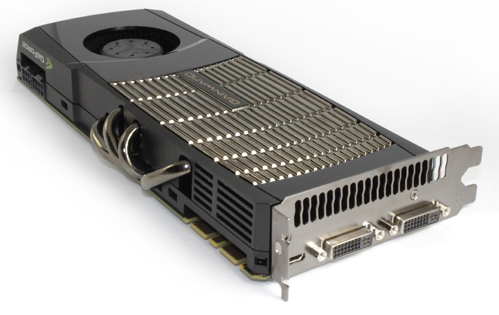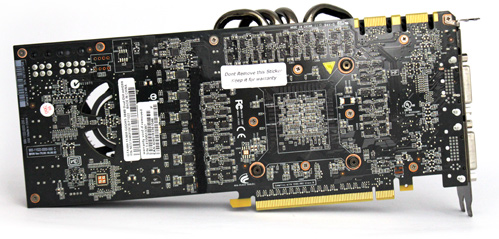Index
Page 3 of 10
Gainward GTX 480 comes with reference dual slot cooling. We must admit the cooler looks pretty cool with five large heatpipes.
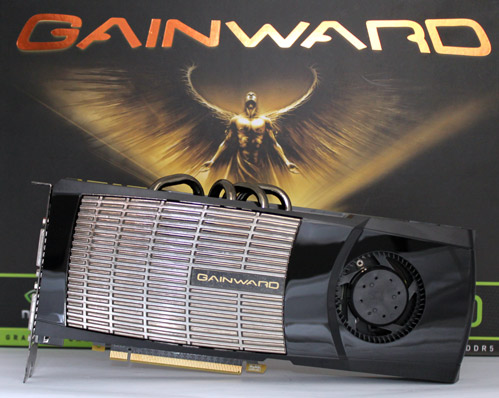
The writing on the card proves that this GTX 480 comes from Gainward.
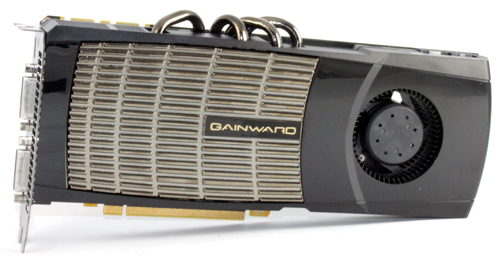
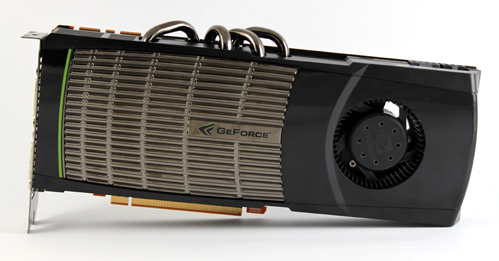
GF100 heats up to about 90°C, where fan noise is pretty audible and discernible from the rest of the components. The card is pretty quiet in idle mode, and while gaming won’t be a problem if you turn up audio, if and when you’re working in 3D programs it will get on your nerves. The fan, which is located at the far end of the graphics card, blows through the large aluminum block and the hot air escapes the case via the outlets on the I/O panel.
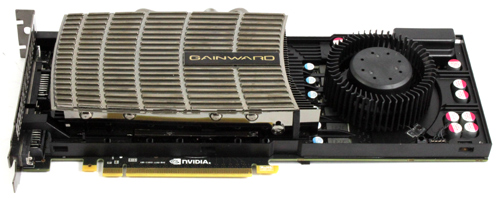
Copper heatpipes and the aluminum heatsink cover more than half of the card’s surface. Unlike most reference graphics cards, the GTX 480’s heatsink is visible for the most part rather than hidden under the plastic hood. The plastic hood directs the air towards the fins and heatpipes. As you can see, the cooling is pretty complex and is made up of several parts.
The heatpipes are in direct contact with the GPU whereas the memory is in contact with the metal block. All the power components are cooled by the fan and passive heatsink. Nvidia is using a 65mm Delta fan, which is rated at 1.8 A.
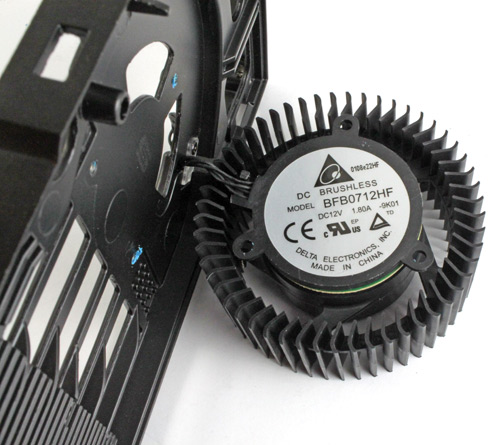
Nvidia resorted to using the same trick they used on the dual-GPU GTX 295 for air supply - this card features a hole in the PCB behind the fan as well. There's also an air outlet on the I/O panel and it's similar to that on the GTX 285.
The thermal paste residue clearly shows that the GF100’s heatspreader is wide enough for 5 6mm heatpipes, which with the distance in between the heatpipes makes the heatspreader 42.3 x 42.3mm in size. The GF100 is made in 40nm and contains about 3.2 billion transistors.
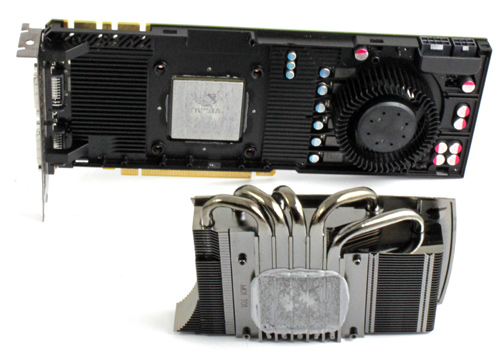
The GTX 480 is the first Nvidia’s high-end card to feature GDDR5 memory. The provided 1536MB of memory uses a 348-bit memory interface and runs at 924MHz (3696MHz effectively).
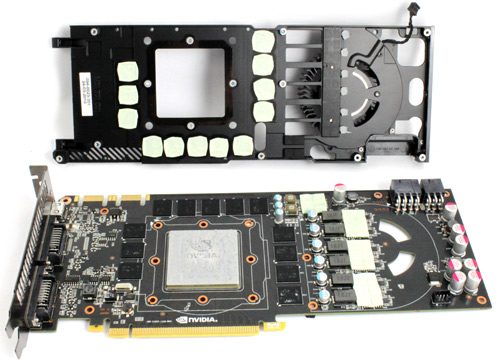
Samsung’s K4G10325FE-HC04 memory is rated at 1250MHz (5000MHz effectively) but it obviously couldn’t be pushed to its full potential on GTX 480 cards.
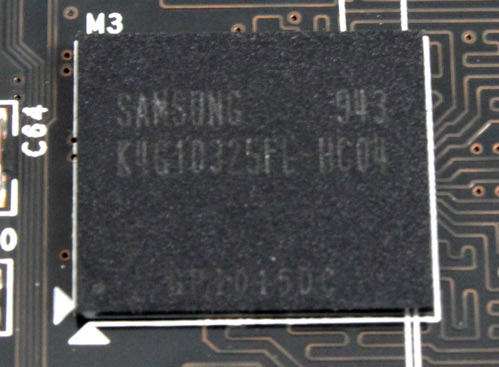
GTX 480 has TDP of 250W and it needs external power via one 8-pin and one 6-pin connector. Recommended PSU for the GTX 480 is 600W whereas for GTX 470 Nvidia recommends a 550W PSU (GTX 470 has TDP od 215W). Power connectors are located on the top of the card.
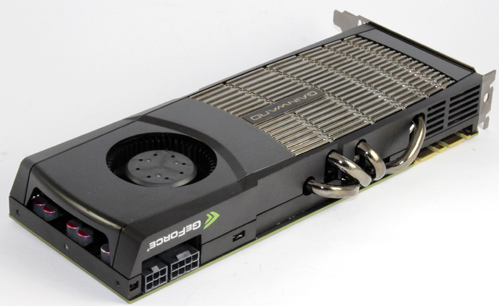
The I/O panel features two standard dual link DVI outs as well as one miniHDMI. Gainward included a 1.5m cable with a miniHDMI connector on one end and a regular HDMI connector on the other. Despite the card supporting DisplayPort, Nvidia deemed HDMI more important for most users, so DisplayPort implementation will be up to partners.
Nvidia included an HDMI sound device within the GPU, rendering the task of connecting external audio to your graphics card obsolete (previous generations of Nvidia cards required this if you wanted to bring both audio and video to your HDTV via one cable). The GF100 supports anything you might need for 3D TV etc., using HDMI 1.4. The HDMI interface is HDMI 1.3a compatible which includes DTS-HD, AC-3, Dolby TrueHD, DTS and up to 7.1 channel audio with 192 kHz / 24-bit.
In case you're looking to use three displays with Nvidia 3D Vision technology, you'll have to reach further into your pockets for another card as one card will allow for two displays only.
